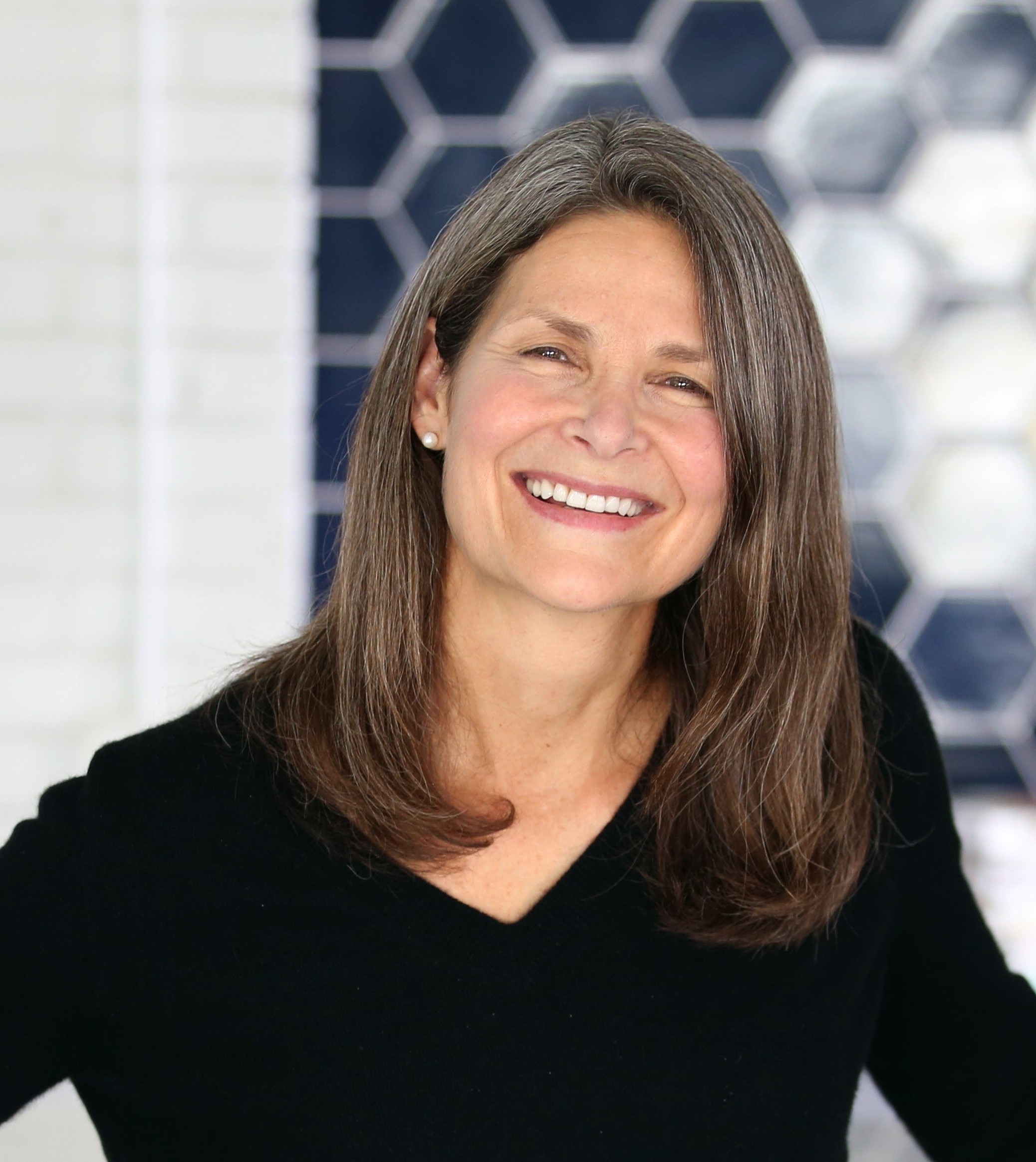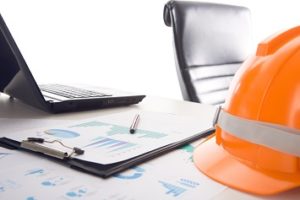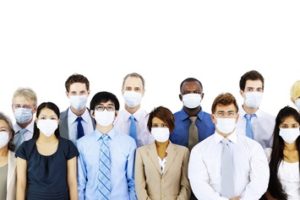In our most recent episode of EHS on Tap, we spoke with Sheryl Corrigan, the director of environment, health, and safety (EHS) for Koch Industries, Inc. In addition to talking about her career path, she provided some keen insights into how she manages a multinational EHS program, and how the COVID-19 pandemic has changed her approach.
The podcast was originally published on April 29, 2020, and if you’d prefer, you can find the full audio here.
Justin Scace: Hello, everyone, and welcome to “EHS on Tap.” I’m your host, Justin Scace, senior editor of the EHS Daily Advisor, and we hope that all of our listeners are staying safe and healthy during the COVID-19 pandemic. I continue to come to you from my home office for our latest episode, and I’m excited to introduce today’s guest, who leads EHS efforts at one of the largest organizations in the world.
Joining us today on the podcast is Sheryl Corrigan. Sheryl is director of environmental, health, and safety (EHS) for Koch Industries Incorporated, providing oversight of Koch companies’ compliance with regulations and internal policy and tracking and ensuring follow-up on emerging issues. Before joining Koch, Sheryl was commissioner of the Minnesota Pollution Control Agency, advising the governor and helping set the strategic direction for the state on environmental matters. She has also worked for 3M in a number of positions, focusing on EHS operational excellence.
Based in Wichita, Kansas, Koch Industries owns a diverse group of companies involved in refining, chemicals and biofuels, forest and consumer products, fertilizers, polymers and fibers, process and pollution control systems, electronics, software and data analytics, minerals, glass, automotive components, ranching, commodity trading, and investments. With a presence in more than 70 countries, Koch companies employ 130,000 people worldwide. About 65,000 of these are in the U.S. Since 2009, Koch companies have earned more than 1,300 awards for safety, environmental excellence, community stewardship, innovation, and customer service. So, Sheryl, thank you very much for taking the time today to join us on “EHS on Tap.”
Sheryl Corrigan: Justin, I’m pleased to be here. Thanks for that great introduction.
Justin Scace: You’re very welcome. To start us off, tell us a little bit about your EHS journey. What first prompted you to pursue a career in the field, and how did this eventually lead you to your current role at Koch Industries?
Sheryl Corrigan: I grew up in Minnesota, and I like to tout the state’s motto, which is Land of 10,000 Lakes. There is a lot of shoreland and a lot of outdoors in Minnesota, as you can imagine. So I grew up—I was a river rat, and I knew I wanted to work in some capacity outside enjoying the environment, and I always wanted to do what I loved and love what I do.
And so I became a geologist. I worked for the state of Minnesota and also a number of other local agencies—environmental agencies. Then I worked for the private sector after that. And then in the early 2000s, I went back to government and, as you said earlier, became commissioner for the Environmental Regulatory Agency in Minnesota. And that’s really when I met Koch Industries. I actually met with a number of the Koch leaders, and I was struck by their humility and their focus on learning and improving, from the highest level of the organization. I had the pleasure of meeting the leaders for the Flint Hills Resources subsidiary, which is the transportation fuels company, and a couple of other companies while I was commissioner and partnered with them in a number of different projects that benefited the community, and they were just terrific. And so that was my introduction to Koch Industries.
Justin Scace: That’s great. Obviously, Koch Industries is an enormous organization. What are some of the top environment, health, and safety challenges that you face at the company, and how do you go about meeting these challenges?
Sheryl Corrigan: In your introduction, you talked about how broad the scope of Koch Industries is. We operate in a number of different sectors, and from a people perspective, we also have well over 100,000 people. So my biggest challenge as the leader of the organization is making sure that we’re always connected to the vision, really making sure that everybody from our frontline operators all the way up through our executive suite is focused on what the role of business is. From our perspective, and I think from the perspective of everybody in industry, the role of business in society is really to help people improve their lives. And we do that by providing the products and the services that folks value more highly than the alternatives that are on the market. So that’s the Koch vision.
And we try to do that. We strive from an EHS perspective to do that in a way that uses the fewest-possible resources; that’s my goal, so connecting to that vision, how do we get stuff to the people who really need it to help them improve their lives in the least resource-intensive way as possible? That means making sure that we’ve got the right talent at all levels in the organization and that those folks have the right tools and the right ability to access knowledge and knowledge networks and to be able to do their jobs and then to make sure that the folks who are closest to the work that is making those great products and providing those services are the folks who are actually making decisions, right, so they are able to exercise their knowledge and their abilities in a way that really helps us reduce the level of resources that we’re using to make our stuff.
And then finally, to make sure that incentives are aligned all through the manufacturing process and supply chain. You can imagine, with the number of companies and number of employees, number of products, that’s pretty daunting. So I spend a lot of my time just making sure that there’s alignment in all those different areas. That sounds a bit trite, but really I think my biggest challenge—and this is probably true for a lot of the folks who will be listening to this podcast—is really understanding how to enable the right environment for all those things that I just described to happen and then just get out of the way. Let our employees, let the people who really know what they’re doing every day, get it done in the best-possible way.
Justin Scace: Yeah, absolutely. Now, one of your primary roles at Koch is EHS compliance and ethics. From your perspective and experience, what’s your view on the relationship between EHS and ethics, and how are they entwined?
Sheryl Corrigan: I think it’s pretty hard to separate them out. When I think about ethics, I really think about principles and morals, and I think that that’s what most people think about, as well. What principles or what morals govern my behavior in how I conduct an activity is how I think about ethics. And in our company—we already talked about our vision, and that’s making stuff that makes people’s lives better. We need to do that in a way that is good for both individuals and people in our company, as well as society, so that mutual benefit, if you will, that we got to make stuff that overall creates good for folks. And to me, that’s really at the very fundamental core of what environmental, health, and safety professionals do every day.
Justin Scace: Yeah, absolutely.
Sheryl Corrigan: Yeah, yeah. So, you know, it’s about people, right? From a health and safety standpoint, we’ve got over 1,000 EHS professionals working in our facilities every day, interacting with employees that need help in navigating work processes and how to put in the right kinds of protections for employees so that they can do their work safely, not just one time but consistently over long periods of time—so really understanding how to build that capability and also those systems so that they’re there for all and so that they benefit. So from a health and safety standpoint, I think it’s really easy to see that connection to ethics. It’s about people and keeping people safe, and also our community safe, from a process safety standpoint.
On the environmental side, I think it’s also … It’s pretty clear to see that ethical connection, but it’s not quite as direct, I think, from an employee or a personal standpoint. It’s really about making sure that the resources that are available for all of us continue to be sustainable. Let me unpack that a little bit. From a perspective of environmental protection, we want to make sure that, as we are manufacturing and in every manufacturing facility—I don’t care who you are or where you’re located—you’re going to be using some resources, and you’re going to be having some sort of emissions. And so the job that we see from an ethical standpoint and a mutual benefit standpoint is to use as few of those resources as possible and to limit our emissions to the extent that that is possible, practical, and good for folks. So that environmental piece is more macro than it is individual but nonetheless equally as important.
Justin Scace: Yes, absolutely. Of course, the current COVID-19 pandemic—this is top of mind for EHS managers and professionals worldwide. Could you tell us about how Koch Industries is addressing the crisis and the measures it’s taking to protect the health and safety of its employees?
Sheryl Corrigan: Yeah, it sure is top of mind for everybody, and I know working from home … You’re working from home, and I’m working from home, and we’re all learning different ways to do the things that we need to get done. I want to start by just giving a shoutout to everybody who is working in essential businesses. These are folks who every day are going out and helping all of us who are working from home get the stuff that we need. A great example for us at Koch Industries is—I think you mentioned that earlier—that we have a business, a fairly large business, our Georgia Pacific subsidiary, that’s engaged in making paper products. I don’t know about you, but in my family, paper products are pretty important. You know, there’s been a lot of discussion certainly about toilet paper and the lack thereof earlier during the pandemic.
And we’ve got frontline workers. We’ve got folks who are getting up every day and going to our manufacturing facilities, recognizing that what we make is essential. They are just kicking it, and I just want to make sure that everybody on the podcast recognizes that there are folks who every day are working really hard so that we can all benefit.
Justin Scace: Absolutely.
Sheryl Corrigan: So that’s number one—just recognizing that for the essential businesses that are operating that there are folks who are really out there doing what needs to get done and doing it in a way that should make us all proud. It certainly makes me proud. So keeping along that line of thinking, first and foremost at Koch during this whole pandemic—and this is true for everybody—it’s all about our employees and our communities. We want to make sure that we’re doing what we need to do to keep our employees safe and also help their families in the communities that we operate in.
We’ve been doing that in a number of different ways. Certainly, there’s philanthropy. We’ve been working with emergency responders and others in communities to make sure that they have PPE, which is personal protective equipment. That’s also been in the news. So where we can help, we’ve been doing that. We’ve been following, as others have, the CDC, Centers for Disease Control [and Prevention], guidelines around social distancing. That’s true in our manufacturing areas, so we’ve reconfigured our manufacturing where that’s been possible. We’ve also staggered shifts, and we’ve reimagined how work is being done and then implemented different work practices to make sure that our employees are able to maintain that social distancing that everybody’s been talking about.
And believe me, and I’m sure that the folks who will be listening are recognizing that that’s challenging for businesses. It’s very much a part of the conversation, regardless of what industry sector we’re in. But I believe, and I have seen the incredible creativity and innovation that our employees, and I’m sure other employees across the globe, have been bringing to the workplace to make sure that we can continue to do work and do it safely according to the CDC guidelines.
So there’s the PPE and social distancing but then also making sure that our facilities, wherever we are, whether it’s an office facility or whether it’s a manufacturing facility, that we’re cleaning and following, again, the guidelines for what good looks like in those environments and letting our employees know.
And then probably the most important is just making sure that we’re checking in—that relationship between supervisors and employees and supervisors really understanding what are the personal challenges with their employees? They might be caregivers, for example, for an elderly relative, or they may have school-age children who are not currently going to school, and they might have childcare issues—just really recognizing on an individual basis how we can help our employees navigate through the personal challenges that they’re facing, as well as the expectations and things that have to get done from a business standpoint. I think that’s been probably the most important and most impactful, so just that communication every day to the folks that work for us about what’s going on with them and what’s going on with the business and how can we help.
Justin Scace: Yeah, definitely. And absolutely a big thank you to all of those essential workers and folks on the front line and in health care doing all they can during this crisis.
Sheryl Corrigan: Yeah. You know, something I didn’t mention that’s also, I think, pretty important that we’ve been really trying to do more of, and that is learning from our industry partners. There are a number of groups that we connect with in the various industries. We have our transportation fuels business, but we also have a fertilizer business and a polymers business and our paper business, which we talked about. But really connecting with folks across all of those businesses, as well as folks in our supply chain, to figure out what are their best practices? What are they doing? How can we collaborate? How can we coordinate? Again, back to the vision around making people’s lives better and using the fewest number of resources. How can we continually get better at this COVID response? Because we think that, based on what we’re hearing from our epidemiological colleagues and healthcare folks and other policymakers, this is something that’s going to be with us for a while. So, we’ve got to figure it out, and like I said, learning and benchmarking and then applying those best practices is something that we’re really focused on doing more of.
Justin Scace: Yeah, that’s great. Speaking of matters of innovation, I’d like to switch gears a little bit and talk about EHS technology and its effect on everything from analytics to training. What are some of the technologies that Koch Industries is putting to use in the EHS space, and what are some of the greatest innovations that you’ve seen recently?
Sheryl Corrigan: Oh, so I could talk about this for a long time. I won’t bore you with all of the details, but like everyone knows, the word is transformation. Whether you’re talking about industry 4.0 or transformation from an analytics space, EHS is certainly at the forefront in many regards. So just focusing on the operations arena, because I think that that’s probably the most interesting, there is a huge driver toward more automation and really using technology to understand processes and control them better than we can or better than we have been able to with existing instrumentation.
There’s a real focus on running our equipment with as little intervention as possible, and that’s only become doable with the advent and the explosion, really, of sensor technology. So I’d say the biggest, most exciting change in EHS and in the operations environment is really around sensors and our ability to use sensors to help us detect the tiniest variations in our processes so that we can optimize even more than we have been in the past. I don’t want folks listening to think that we haven’t had automation and process controls. We certainly have had that. But the level to which we can now see using our sensors into the process is just unprecedented, and it’s opened up an enormous opportunity for improvements.
One thing I’d like to highlight is a project that we’ve been doing at Koch with some partners. Our Molex company, which is our electronics company, and our transportation fuels company, Flint Hills Resources, has partnered with the EPA to develop sensors and sensing networks to be implemented at our manufacturing facilities, in particular petrochemical facilities, to detect emissions—that is, leaks, very, very, very small leaks that occur in piping and pump fittings and so forth at very low levels. This technology, it sounds kind of like, oh yeah, great. OK, leaks. But from an environmental standpoint—back to the ethics and the question that we talked about before—from an environmental standpoint, leaks are now, or fugitive emissions are now, one of the biggest drivers for environmental emissions. It’s a big chunk of what gets into the atmosphere, and that’s only because industry has been super, super successful at controlling stack emissions and other things over the last several decades. So now, the biggest chunk of opportunities are around these tiny little leaks. We’ve developed a sensing network that, as I said, can detect these leaks much better than the technology that we had prior.
What’s really interesting about this is we developed this technology in working with the EPA relative to environmental protection and environmental improvement, but we’re also seeing now a real benefit from a processed perspective because the sensing networks also then are able to alert folks in our operations when a chemical or some compound has been released, and it can help them understand from a process and from an equipment standpoint what might be going right or wrong in their process.
From a process safety and a process control standpoint, the whole notion of looking at leaks as an indicator is pretty valuable, and it was something that we hadn’t really thought about when we developed the technology for the environmental aspects of it. That’s just one example, but really the most exciting stuff that’s going on I think is around these sensing networks and using sensors versus the typical technologies that we’ve had in place prior.
Justin Scace: Yeah, very interesting. Now, one thing to note is many of our listeners, they work at small to midsize organizations that probably have more limited resources than Koch Industries. So what advice do you have for them on implementing EHS initiatives or technology? Anything that they should particularly prioritize?

Sheryl Corrigan: That’s a great question. Just like we talked about earlier, I try to get out of people’s way. That’s my biggest challenge and I think my biggest value at Koch, and so keeping along those lines, I don’t think I can tell folks what to prioritize, but I can tell folks or share how I think about things as I am prioritizing. The first thing that I think about, number one, is what are our business goals? What are we working on? What’s really important to our customers and our stakeholders and constituents? So number one, what are the business goals?
Number two, what is the capability of my team? What is the capability that I have today? Do I have capability that’s going to help continue, in a meaningful and constructive way, our business goals, or do I need to add capability? If I need to add capability, what is that? So capability of my team.
And then number three, what’s really happening in the world, in industry, in my company, in markets that can affect where we need to go from a business standpoint? So point of view. What’s happening in the world, basically.
So those three things: What are the business goals, what is my capability, and what’s my point of view? That, if you look at the intersection of those three things—or at least that’s what I do—if I look at the intersection of those three things, generally, the priorities start to fall out. A great example, you know, we were just talking about technology. That’s really in that point-of-view sphere, so what’s happening in the world today? Well, sensing networks are happening. Sensors are available, and they have a capability that allows us to change how we actually operate our equipment, so what does that mean? Asking myself those kinds of questions and then connecting it to where our business wants to go is the fundamental way that I look at prioritization and I think might be helpful for others.
Justin Scace: Yeah, absolutely. That’s very cool. Now, before we sign off, you’re in the top leadership at Koch Industries, and I’d like to get your thoughts on EHS leadership in organizational culture. What do you think about top-down versus bottom-up leadership, and what are some of the biggest leadership lessons you’ve learned in your career?
Sheryl Corrigan: Culture is something that, in the EHS arena, we talk about all the time—all the time. And I know you’re aware of that, Justin. So the question about top down versus bottom up, based on my experience and I think probably everybody else I’ve worked with, you got to have both. You can’t have one—you can’t have the other; you’ve got to have both. And the way that I look at it is that leaders, that top down, work to enable. They help identify where we need to build capability, where we need to maybe buck up our systems or build resilience in our systems. And then, what are the barriers that are keeping us from doing that? I see leaders, that top down, as folks who are enabling that capability and resilience-building and asking the right questions, providing the right vision, and focus on what we’re really about.
And then the bottom-up side is employees, looking at our employees as the problem-solvers. So bottom up is man, every day, it doesn’t matter what you’re doing; whether you’re at Koch Industries or anywhere else, everyone who is working is coming up probably every minute with a way to solve a problem that they didn’t necessarily think that they were going to have to encounter on that particular day.
We all have this notion that work should go a certain way. We write our lists, our to-do list or goals or objectives for the day, for the hour, for the week, you name it. But it never quite goes the way that we think. And so we all have to be problem-solvers, and our employees at Koch, and employees wherever you are, are doing that every day, every minute, and they are incredibly good at it. And so that bottom up is allowing our employees to solve problems, giving them the resources through that enablement so that they can solve the problems that they need to solve every day to work safely, to work cleanly with as little environmental impact as possible, and to make the products and services that we all need.
So I really view our employees as man—they’re the guys who make it happen. Just like we were talking about from COVID and the pandemic standpoint, nobody 2 months ago would have thought we’d be where we are today, and yet we’re still able to create the products and make the products and move things forward because our employees are so great, and our leaders recognize that our job is to help them with the resources and ask the right questions, provide the right vision, and then get out of the way.
Justin Scace: Absolutely. One final thing: What would you say are some pitfalls to avoid when you’re building a world-class EHS culture?
Sheryl Corrigan: Oh boy. You know, one pitfall I try to avoid—and it’s probably something you’ve heard quite a bit—is not being connected and not connecting my folks to the vision, which is, are we doing things that are making people’s lives better? Everything has to ladder up to that. And then a personal pitfall that I try to work on every day is never underestimating what other people can do with your idea. Especially today as we’re trying to really be innovative and move forward at a really rapid rate, I think a pitfall that we can all fall into is thinking that our ideas are crazy or they’re not good or that they’re not worth it. The way that innovation happens is a whole bunch of people coming up with crazy, wacky ideas or just thoughts, insight, and they bump into each other, and ultimately, someone figures out how to bring them together into an experiment, and then that experiment turns into a pilot, and that pilot then turns into something that’s really great.
So I think a pitfall for me is recognizing that you’ve got to put forward your ideas and then really let other people run with them, so back to that theme of get out of the way because there are a lot of folks out there who are incredibly brilliant and bright, and they’re working every day, and they have an enormous amount of knowledge. And so we don’t need a smart guy in the room. We need folks who can have the tools and the ability and incentives aligned to follow through on that vision of how do we get better, and how do we continually help people make their lives better?
Justin Scace: Yeah, excellent. Yeah, those are some really great thoughts for our audience. Thanks again, Sheryl, for joining us today on “EHS on Tap,” and stay safe out there.
Sheryl Corrigan: You, too, Justin. My best to you and your family.
Justin Scace: Thanks very much. And once again, we hope all of our listeners are staying healthy and safe, as well. Continue to keep an eye out for new episodes of “EHS on Tap,” and keep reading the EHS Daily Advisor to stay on top of your safety and environmental compliance obligations, get the latest in best practices, and keep your finger on the pulse of all things related to the EHS industry. Until next time, this is Justin Scace for “EHS on Tap.”
 Sheryl Corrigan is director of environmental, health and safety for Koch Industries, Inc., providing oversight of Koch companies’ compliance with regulations and internal policy, and tracking and ensuring follow-up on emerging issues. She also serves on the Board of Directors for Guardian Industries, a Koch Industries subsidiary. Prior to assuming this role, Corrigan was Senior Vice President of Environmental, Health and Safety for Flint Hills Resources, LLC; a subsidiary of Koch Industries. Sheryl Corrigan is director of environmental, health and safety for Koch Industries, Inc., providing oversight of Koch companies’ compliance with regulations and internal policy, and tracking and ensuring follow-up on emerging issues. She also serves on the Board of Directors for Guardian Industries, a Koch Industries subsidiary. Prior to assuming this role, Corrigan was Senior Vice President of Environmental, Health and Safety for Flint Hills Resources, LLC; a subsidiary of Koch Industries.
Before joining Koch, Corrigan was commissioner of the Minnesota Pollution Control Agency, advising the governor and helping set the strategic direction for the state on environmental matters. She has also worked for 3M in a number of positions focusing on environmental, health and safety operational excellence. Corrigan is a member of the GreenBiz Executive Network. She received a bachelor’s degree in Geology from the University of Minnesota Institute of Technology. Based in Wichita, Kansas, Koch Industries, Inc. is one of the largest private companies in America, with estimated annual revenues as high as $110 billion, according to Forbes. It owns a diverse group of companies involved in refining, chemicals, and biofuels; forest and consumer products; fertilizers; polymers and fibers; process and pollution control systems; electronics, software and data analytics; minerals; glass; automotive components; ranching; commodity trading; and investments. Since 2003, Koch companies have invested nearly $120 billion in growth and improvements. With a presence in more than 70 countries, Koch companies employ 130,000 people worldwide, with about 65,000 of those in the United States. From January 2009 to present, Koch companies have earned more than 1,300 awards for safety, environmental excellence, community stewardship, innovation, and customer service. For more news and information, visit www.KOCHind.com. |




